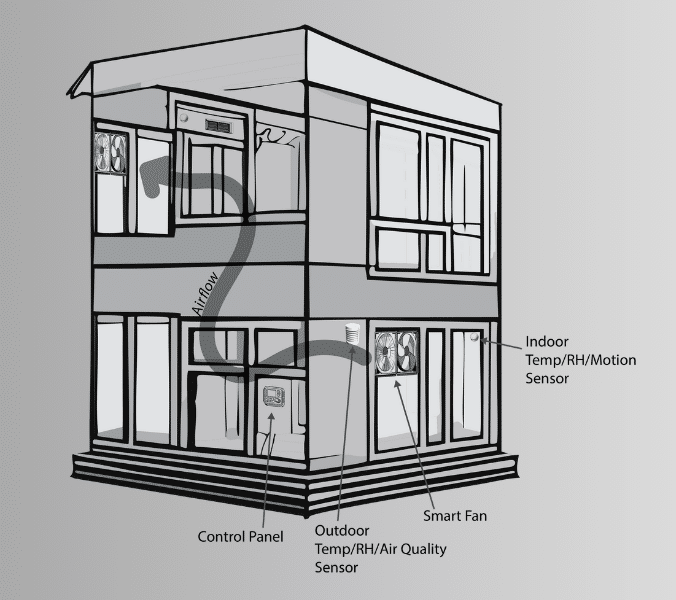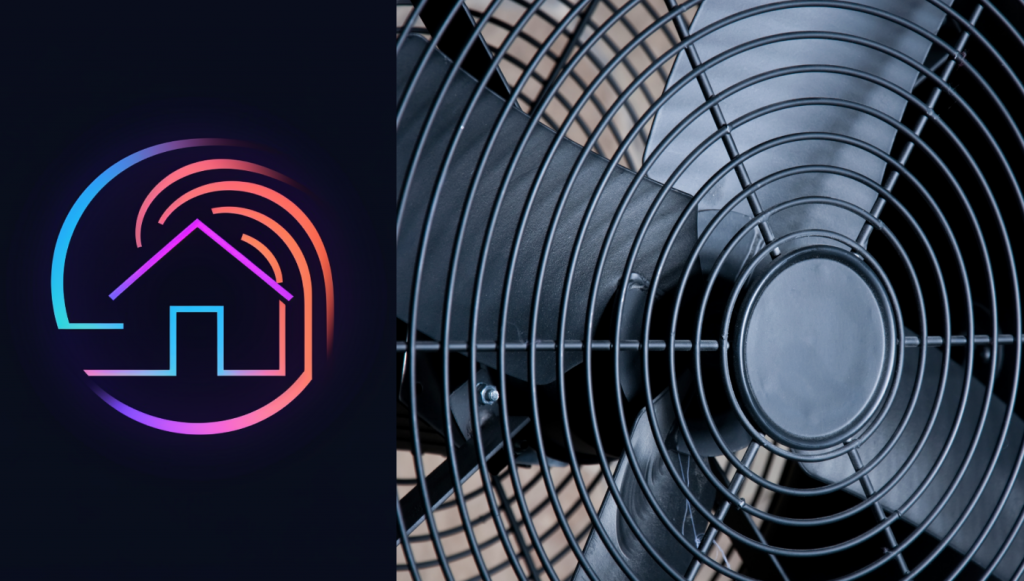What if, instead of fighting the environment around us, we harnessed it to create a low-cost, accessible tool that made our living spaces more comfortable?
A team of computer science students from NAU is working on a project that will do exactly that.
Project SmartFan is one of five finalists in the 10X Clean Cooling Student Competition, which offers a $100,000 prize to one winning team for prototyping their product and $50,000 to the project’s community partner—in SmartFan’s case, Habitat for Humanity of Northern Arizona—for implementation.
The competition is designed to “inspire the development and implementation of new and innovative solutions” that address the impacts of extreme heat in states along the I-10 corridor. This region stretches across the southern United States from California to Florida, where more intense and more frequent heat waves are disproportionately impacting low-income and underserved residents.

Alexander Shenkin, the faculty lead of the team and assistant research professor in the School of Informatics, Computing, and Cyber Systems described SmartFan as a system that “essentially mimics peoples’ behavior of opening or closing windows to cool or heat their homes at different times of day,” but in a “smarter,” more efficient way. Because SmartFan uses very little energy to keep living spaces as cool as possible in warm seasons and as warm as possible in cool seasons, it “reduces bills for those who have HVAC systems, improves life for those who don’t, and all the while reduces the massive carbon footprint of HVAC systems worldwide,” Shenkin said.
Ten Across and Climateworks Clean Cooling Collaborative, the competition’s sponsors, highlight a need for scalability in effective climate solutions: “Current cooling technologies are major contributors to climate change, making it imperative that alternative, affordable and scalable solutions be developed to meet the needs of a hotter planet.”
This is a necessity the SmartFan team emphasized in their project description, noting that their “simple yet smart” solution scales easily and affordably. “I believe that Project SmartFan, more than anything else, represents a major leveraging of current technology in re-addressing old solutions,” said Brandon Mack, the student team lead for the project. “The SmartFan system itself is simple conceptually; however, it is designed to integrate into any household with ease, reducing the strain on current interior climatization tools or altogether replacing cooling systems. This ultimately reduces both energy usage and emissions with little to no thought on the consumer’s behalf.”
If Project SmartFan is funded through this competition, Habitat for Humanity of Northern Arizona has agreed to install prototypes in 40 homes with the help of Product Insight, Inc.
As competition finalists, SmartFan’s team members Trevor Johnson, Connor Mayon, Connor Swingle and Mack, will participate in a virtual pitch event via Zoom from 10 a.m. to noon, Tuesday, March 19. Those who would like to watch the team pitch in person, can register to attend a catered watch party in the Grand Canyon Room at the University Union.
Watch Project SmartFan’s pitch video and vote for them for People’s Choice here. Voting ends at 11 a.m. MST on Tuesday, March 19.
Jessica Clark | NAU Communications
jessica.clark@nau.edu





